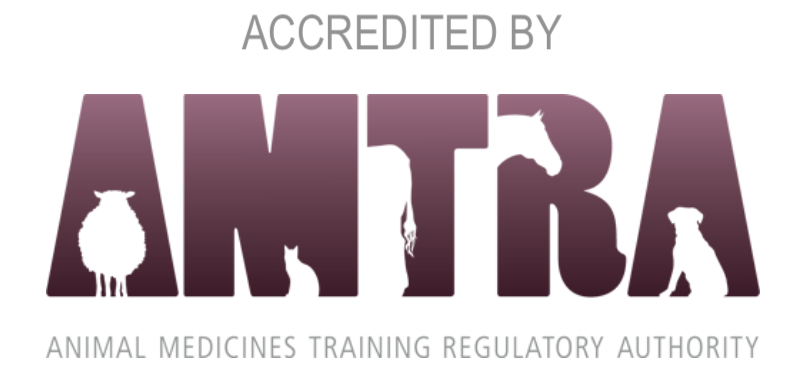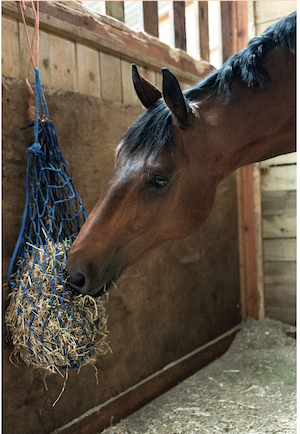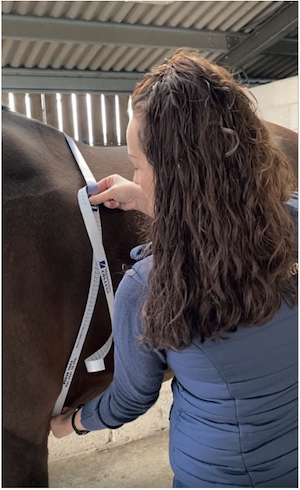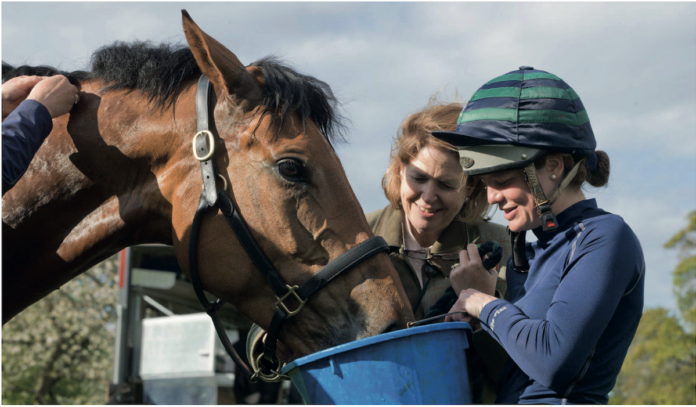Feeding for Optimal Performance
By Dr. Courtney Miller BS BVetMed MRCVS Head of Nutrition at Dodson & Horrell.

RAMAs/SQPs who read this feature and submit correct answers to the questions below will receive two CPD points. For more about AMTRA and becoming a RAMA/SQP, visit www.amtra.org.uk
Happy guts = Peak Performance. Sounds simple, right? But when we consider all of the confounding factors that can get in the way, like gastric ulcers, incidences of tying up, pH imbalances in the hindgut, dehydration, electrolyte deficits, travel stress, energy fluctuations, digestive disturbances, and poor recovery, it becomes a little less so. Performance horses are elite athletes in the equine world, and much like their human sportsperson equivalents, diet cannot be forgotten if we are trying to optimise potential. So how do we do this? If we break feeding down into bite size pieces and ensure each building block is addressed, together we can create an ideal diet plan for each horse’s individual needs so they can be at their best every time they compete.
First thing’s first: Get the basics right
Before considering what complementary hard feeds to use, consider your horse’s forage and water. Forage makes up the largest part of each horse’s diet and should equate to at least 1.5-2% of their bodyweight per day in dry mater weight. What is dry mater weight? It is the weight of your forage without its water content. Haylage has a higher water content then hay, so a good estimate of what should be fed to get to at least 1.5-2% of dry mater weight if you are not providing it ad lib, is 2% of your horse’s bodyweight per day in hay, or 2.5% of your horse’s bodyweight per day if you’re feeding haylage.

Forage supports physical health and mental wellbeing, helping digestive function from the teeth right through to the hindgut, and allowing performance of natural trickle feeding behaviour even when stabled. Keeping mouths free from discomfort and digestion optimised, helps ensure horses will be ready and able to use the energy they receive in their feed when needed.
How does short chop fibre fit in?
Chops or chaffs can be a beneficial way to bulk out a meal consisting of hard feed, and a way to add in supportive additives, oils, or pelleted grasses as part of your horse’s total daily diet. Many bagged chops consist of a blend of fibre types, including alfalfa – two things that have been recently shown to support the prevention of gastric ulcer formation. In addition, feeding a small amount (i.e. a double handful) of these blended chops shortly before work (approximately one hour beforehand) may help physically prevent as much movement of the gastric fluid within the stomach, lowering the potential for further irritation of the stomach wall.
Water is often overlooked, but hydration in performance horses is incredibly important not only for performance but also for full and efficient recovery between events. At rest, horses drink approximately 50ml per kg of their bodyweight per day. Exercise can increase this a further 50-400%! To replenish what is lost during work, there is evidence that lukewarm water is best, and if you have a fussy horse who is not keen on water that smells or tastes different at events, using products to increase fluid intake like mashes may help. We must not forget that electrolytes in addition to body water need replacement, whenever horses sweat or perform medium to hard work. This not only replaces losses but helps muscles recover from work at a cellular level. Using balanced electrolytes is best, as there is some evidence within the research that salt on its own can decrease thirst and associated water intake temporarily.
Now onto complementary products
In a marketplace full of feed and supplement options, choosing the right mix, pellet, cube, balancer, or supplement combo can seem daunting. But there are a huge number of options that can work and bearing in mind a few simple tips can help guide your choices.

First, ensure your product is suitable for your horse’s workload. Performance feeds are generally a good choice for horses in regular medium to hard work, whether they are competing or not. Diffuse down to more concentrated options are available, which can help if you have a fussy feeder with a limited appetite. When incorporating a balanced feed that will satisfy daily nutrient requirements, it’s important to ensure you’re providing the amount recommended by the manufacturer feeding guidelines. If you are feeding below the guidelines, it might be worth considering a product change, or the addition of a balancer, to ensure your horse is obtaining all of the vitamins and trace minerals they need per day, which are not always readily provided by the other parts of their diet (i.e. forage and grazing).
Second, ensure your product is suitable for your horse’s temperament. Energy comes in three forms: proteins, carbs, and fats. Horses who are fizzy and not in a discipline where this is of benefit, may benefit from the use of products with a proportionately higher amount of fat and lower amount of carbohydrates. Starch is often given a bad reputation. This is because it not only is associated with hot behaviour but has links to clinical issues like gastric ulcers and tying up. It should not be feared however, and especially not in performance horses, as it is a valuable source of energy. To best manage starch safely in your horse’s diet, turn percentages into grams. 10% starch is equivalent to 100 grams in 1 kilogram of feed. Keeping meal size small, and specifically, providing less than 2 grams of starch per kilogram of bodyweight per day, and less than 1 gram of starch per kilogram of bodyweight per meal, is the current recommendation for low starch feeding.
Finally, monitor your horse to ensure their diet is performing for them and in turn, they can perform for you. Using weigh tapes in conjunction with body condition scoring at regular intervals (e.g. every 2-4 weeks) is an easy way to pick up on small differences that the naked eye might miss. Keeping a diary of supporting information about temperament, recovery, energy levels, and water intake can also provide a reference point for progress.

ETN’s series of CPD features helps RAMAs (Registered Animal Medicines Advisors/SQPs) earn the CPD (continuing professional development) points they need. The features are accredited by AMTRA, and highlight some of the most important subject areas for RAMAs/SQPs specialising in equine and companion animal medicine.
AMTRA is required by the Veterinary Medicines Regulations to ensure its RAMAs/SQPs undertake CPD. All RAMAs/SQPs must earn a certain number of CPD points in a given period of time in order to retain their qualification. RAMAs/SQPs who read this feature and submit correct answers to the questions below will receive two CPD points. For more about AMTRA and becoming a RAMA/SQP, visit www.amtra.org.uk











